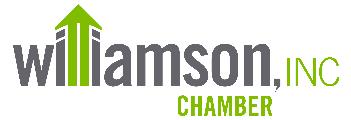In a world that increasingly pivots toward digital-first thinking, it’s easy to assume that the days of paper-piled desks and filing cabinets are firmly in the past. Yet, many small businesses continue to cling to paper-based workflows—often out of habit, perceived security, or the illusion of cost savings. On the surface, these systems seem manageable, even dependable. But underneath that thin veneer of familiarity lies a slow bleed of resources, productivity, and opportunity that few owners can afford to ignore.
Time Isn’t on Paper’s Side
No matter how neatly forms are filed or how meticulously invoices are printed, managing paper-based systems eats into one of a small business's most valuable resources: time. Employees spend countless hours printing, scanning, sorting, and retrieving documents. When a contract goes missing or an invoice needs to be triple-checked against handwritten notes, those minutes can stretch into hours of unproductive labor. While digital systems offer instant retrieval and search functionality, paper demands physical presence, attention, and endless re-checks—a pace that simply doesn’t match the demands of modern commerce.
Storage Space Is Not Just Physical
It’s easy to overlook how much real estate paper claims. Filing cabinets, document storage rooms, and stacks of banker’s boxes quietly sprawl into valuable office space that could otherwise be used for people or profit-generating functions. But the spatial cost doesn’t stop at square footage—it also occupies mental space. Clutter has been repeatedly linked to stress and distraction. A chaotic storage system not only creates inefficiency but chips away at team focus and workplace morale, often without being recognized as the source of either.
Errors Love Paper Trails
Paper invites mistakes. Handwritten notes, duplicate entries, and inconsistent formatting create a fertile breeding ground for human error. Even with the best intentions, employees transcribe incorrectly, miss details, or misfile critical information. These mistakes can lead to billing disputes, compliance issues, or operational bottlenecks that damage relationships and delay revenue. While digital platforms often incorporate validation checks, version tracking, and automated backups, paper has no such safety net. Errors become both more likely and harder to trace.
Smarter Scans, Faster Access
Optical Character Recognition (OCR) technology bridges the gap between paper and digital by turning scanned documents into searchable, editable files. This automation removes the bottleneck of manual data entry, allowing teams to access and process information with greater speed and accuracy. By transforming scanned files into text that can be edited and searched, businesses can quickly locate information and enhance productivity. For companies exploring OCR PDF conversion methods, the payoff is clear: reduced errors, saved time, and seamless information flow across departments.
Compliance Isn’t Just a Checkbox
Many industries are governed by strict rules on data handling, confidentiality, and recordkeeping. With paper-based systems, compliance is not only harder to achieve but also far more fragile. A lost folder or a coffee-stained contract could be a minor inconvenience—or a costly legal liability. Audits become lengthy ordeals, where staff scramble to dig through archives rather than generate revenue. Digital systems, by contrast, offer encryption, audit trails, and controlled access that keep records both secure and accessible, making regulatory compliance far less daunting.
Paper Can’t Travel, But Business Must
The world doesn’t wait for someone to get back to the office. Whether it’s negotiating with suppliers, finalizing deals with clients, or collaborating with remote team members, today’s business landscape demands mobility. Paper-based workflows chain decisions to desks, delay collaboration, and exclude anyone not physically present. By contrast, digital workflows follow the rhythm of the business day—on laptops in airports, phones in cafes, or tablets at client sites—keeping momentum alive when it matters most. In this sense, sticking with paper is more than a workflow choice; it’s a self-imposed limitation.
The Hidden Price Tag of Printing and Supplies
Printer toner, reams of paper, postage, storage boxes—it all adds up. And yet, many business owners fail to consider these as part of the cost of doing business on paper. There’s also maintenance of printers, shredders, fax machines, and copiers, not to mention the environmental cost of all that waste. While these seem like manageable monthly expenses, they silently outpace the upfront investment of going digital. Over time, what’s being “saved” in familiarity is being lost in ongoing operational bleed.
Paper has had a good run, but for small businesses trying to scale, compete, and stay nimble, its time is up. The costs aren’t always obvious, but they’re deeply felt—in lost time, missed opportunities, mounting frustration, and operational drag. Moving to digital workflows is more than a modernization project; it’s a liberation from the invisible burdens paper imposes. And in a climate where every hour and dollar counts, making that shift isn’t just smart—it’s essential.
Discover the vibrant business community of Williamson County with Williamson, Inc., where innovation meets opportunity—join today to connect, engage, and grow your business!


